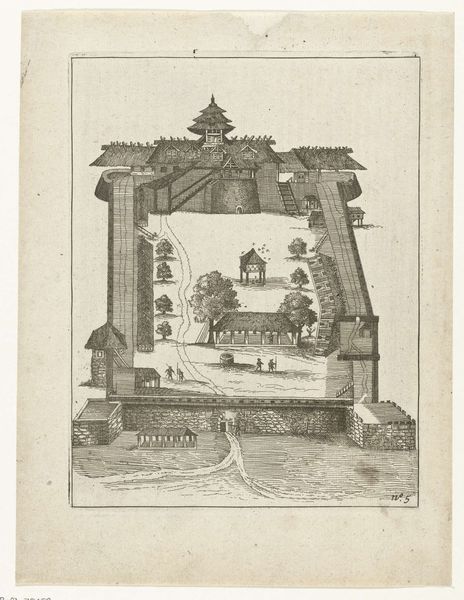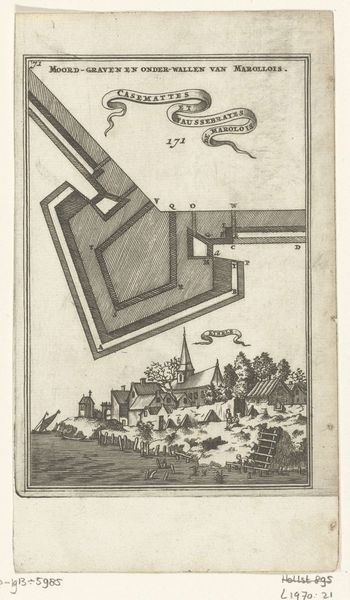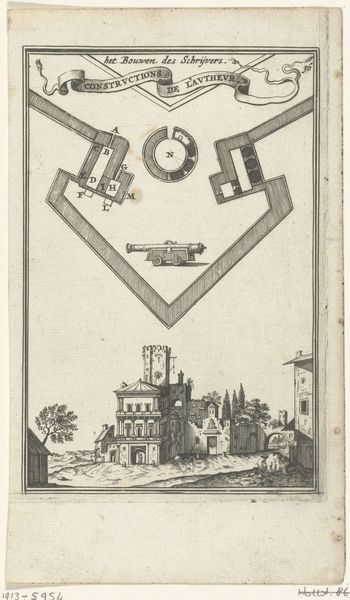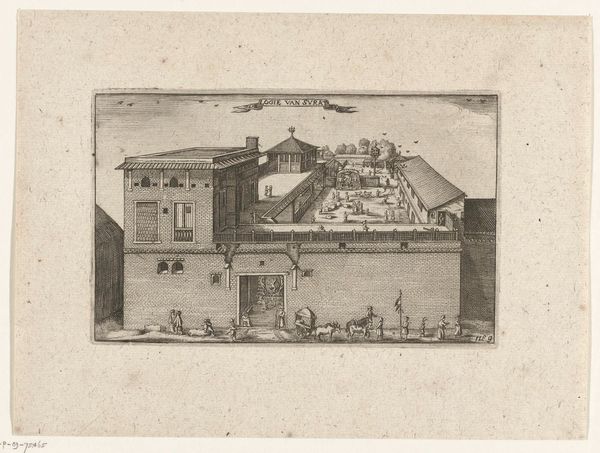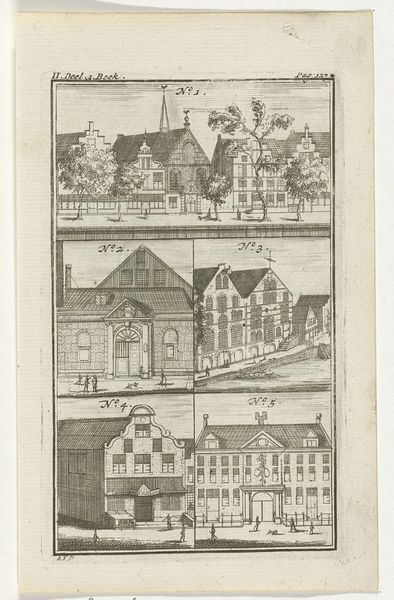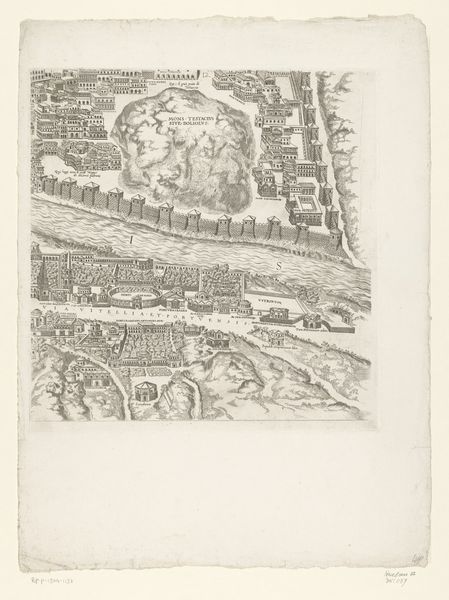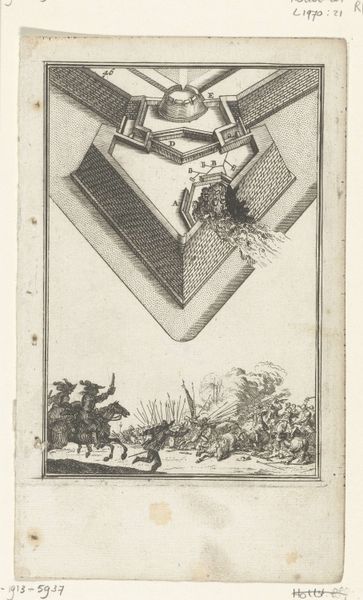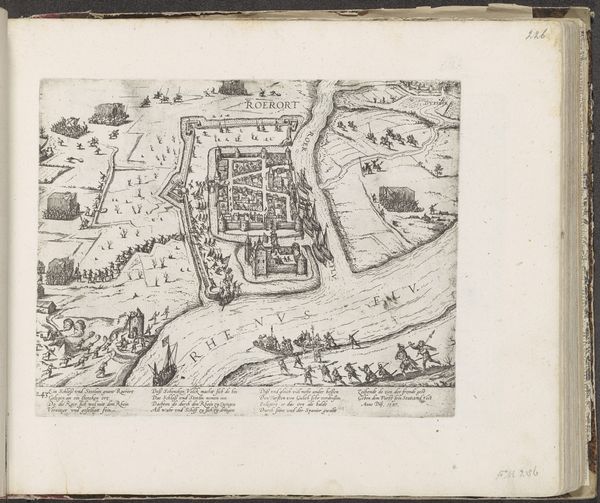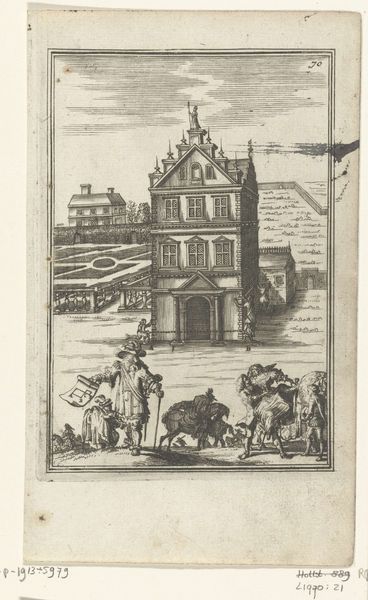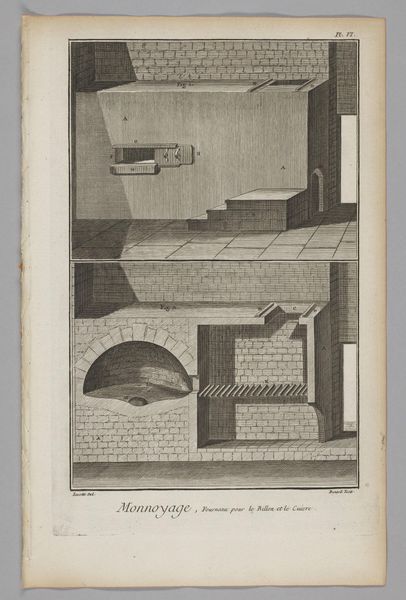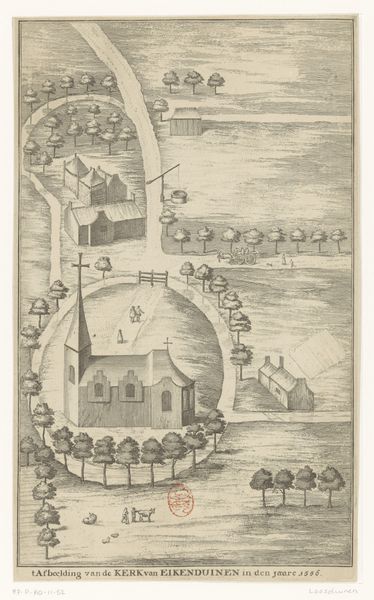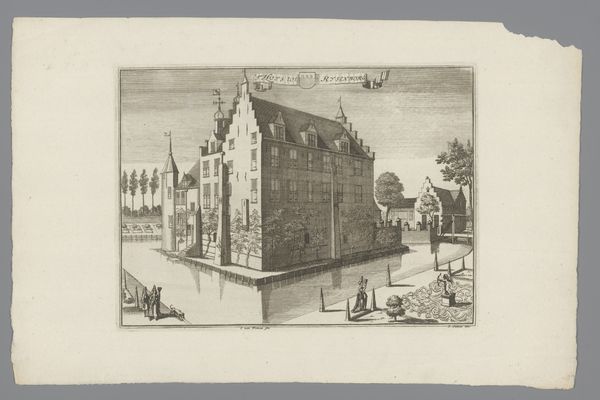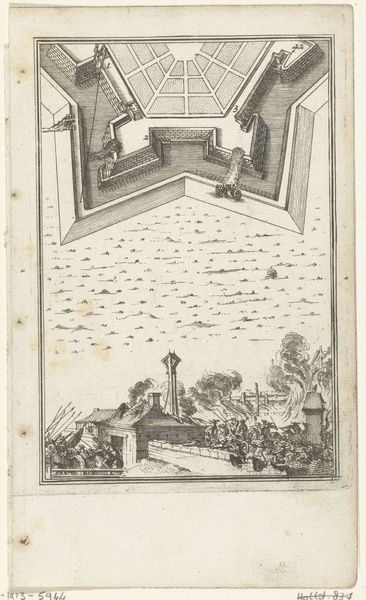
Illustratie voor 'Den Arbeid van Mars' van Allain Manesson Mallet 1672
0:00
0:00
print, engraving, architecture
#
baroque
# print
#
cityscape
#
engraving
#
architecture
Dimensions: height 184 mm, width 108 mm
Copyright: Rijks Museum: Open Domain
Curator: This detailed engraving from 1672 by Romeyn de Hooghe is titled "Illustration for 'The Labor of Mars' by Allain Manesson Mallet". It's currently housed at the Rijksmuseum. My first thought is how wonderfully chaotic it is. There's an almost surreal merging of a highly technical, diagrammatic style with this more idyllic landscape at the bottom. Editor: Surreal is a good word for it. It's that jarring juxtaposition of meticulous, almost sterile, architectural rendering above, crashing into this… bucolic little scene. Makes me wonder about the function of such an image in its original context. Curator: Right, considering the title and Mallet’s focus as a military engineer and cartographer, we can understand it’s not mere decoration. The upper two-thirds meticulously lay out a fortress or fortification plan—we see the stepped walls, the moat. It's like a deconstruction, showing how this instrument of power is constructed. The materiality and labor, even. Editor: And then BAM! You’re suddenly gazing upon, what is it, some laundry hanging out to dry in a quaint little village? What's up with that? Why didn’t de Hooghe or Mallet continue that architectural aesthetic and style all the way? Did their patrons expect the "pretty" village bit at the end? Curator: Maybe it highlights the human element, the cost. Fortifications impact lives. It brings the theoretical down to earth. Or maybe it's purely for visual contrast—breaking the rigid geometry to appeal to a broader audience. Printmaking in this period straddled so many roles. Editor: Yes, prints democratize art. Making it more accessible, sure, but there are economic incentives. More appealing and marketable means more sales. Curator: Precisely. Looking at the execution, it's a fine example of Baroque printmaking – detailed, dramatic use of light and shadow, despite the diagrammatic intent. I love seeing how different techniques have influenced each other, too. Editor: It gives you that almost dizzying sensation where the world stops and a tiny bell rings gently to let you know everything will eventually connect again… if only to reveal some grand tragic joke about power, privilege, or the fleeting nature of everything. I guess. Curator: Well, that's one reading of it. But whatever your interpretation, it does highlight how art, even seemingly technical art, is always embedded in social and political fabrics, and how makers of all kinds constantly grapple with these big topics. Editor: You’ve helped me see the broader implications embedded within this piece. Now the memory bell I’m feeling is the five o'clock, telling me it’s quittin’ time.
Comments
No comments
Be the first to comment and join the conversation on the ultimate creative platform.
